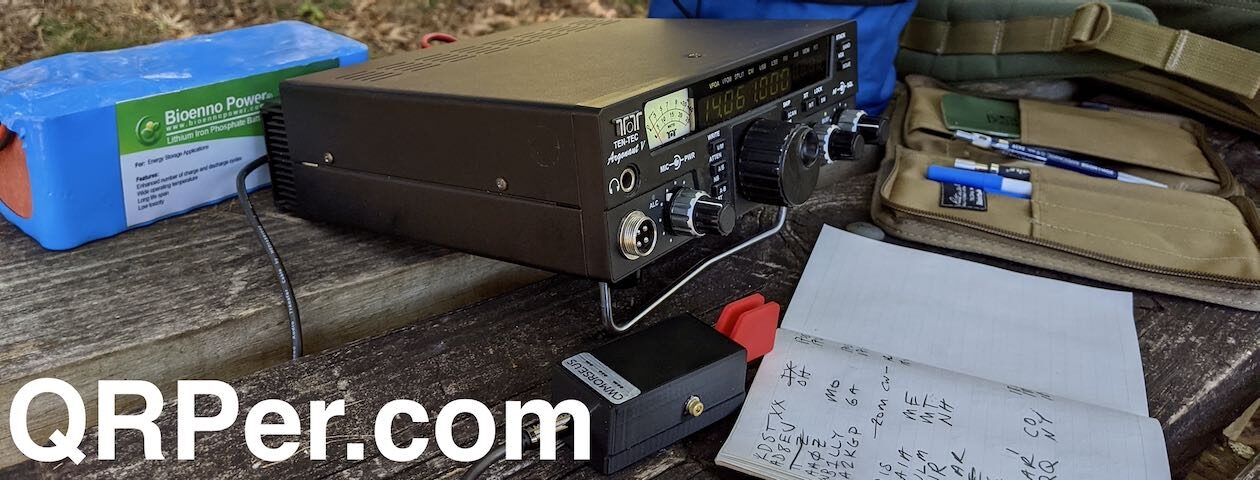 One question that often faces newcomers to the hobby is: “Should I buy a QRP or a 100W transceiver as my first rig?”
One question that often faces newcomers to the hobby is: “Should I buy a QRP or a 100W transceiver as my first rig?”
That is a very deep topic, actually, and one to explore in a future post. A 100 watt transceiver will certainly give you more options as they can often pump out 100W or be turned down to 1 watt. If you’re a phone operator only, that’s got some serious appeal. Then again, if you’re operating POTA or SOTA where you are the DX, power–while still important–is much less so than, say, if you were at home trying to work DX.
Again, a deep topic for another post because there is no right or wrong answer.
One of our readers (Phillip) reached out to me a couple weeks ago and asked if the Yaesu FT-818 would make for a good first HF rig. He liked the portability factor, the build quality, the HF/VHF/UHF multi-mode coverage, and the overall flexibility of the rig as a field radio. His goal was to do POTA activations.
We had quite a few emails back and forth about the pros and cons and I decided it might make more sense to simply take my Yaesu FT-817ND (which is nearly identical to the FT-818) to the field and activate a park in both SSB and CW. Since I knew he wouldn’t necessarily have an external antenna tuner from day one, I paired the FT-817 with my resonant 40/20/10 meter end-fed antenna.
Lake James State Park (K-2739)
On January 17, 2021, I pulled into my favorite part of Lake James State park and quickly set up my station. I only had about one hour to complete my activation, so knew this would be a very brief excursion. Since I actually had a minimal amount of gear, it was a quick setup.
Gear:
- Yaesu FT-817ND
- Par EndFedz EFT Trail-Friendly 40/20/10 meter antenna
- CW Morse “Pocket Paddle”
- Red Oxx C-Ruck
- Bioenno 3 aH LiFePo Battery (Model BLF-1203AB)
- Ham Radio Workbench DC Distribution Panel
- Arborist throw line
- G7UHN FT-817 Buddy Board (v2 Prototype)
- Portable Zero FT-817 Side Rails and Bail
Since I deployed a resonant antenna, there was no tuning or matching involved which not only makes the most of your 5 watts (in that it’s more efficient), but also saves a bit of time in set up and tuning up.
You might note in the video below that my FT-817 has an accessory board attached to the top: G7UHN’s 817 Buddy Board prototype.
I’m testing this prototype at the moment, but didn’t need to employ it at Lake James since it’s really useful when the rig is on your lap or on on the ground. It essentially gives you top-mounted controls and a larger display to read front panel information from above–incredibly useful for SOTA and proper in-the-field activations. Andy’s v3 board will include a memory keyer–I can’t wait for that one!
Since I had Internet access at this park, I used my Microsoft Surface Go logging tablet to spot myself to the POTA network. I started calling CQ on 40 meters phone (SSB) and within six minutes logged eight stations. Not bad for 5 watts and a wire!
Next, I moved to CW on 40 meters and started calling CQ POTA. The POTA spots page auto-spotted me via the Reverse Beacon Network in short order. In eight minutes, I worked six more stations.
I then moved to twenty meters which was essentially dead, so I called it quits a bit early. I needed to pack up and head to my next destination.
Here’s a QSOMap of this short activation (red polylines are SSB and green CW):
I also made one of my real-time real-life no edit videos during this activation if you’re interested:
Truth is, each time I use the FT-817, I love it more. Sure it’s only 5 watts, has no ATU, has a small display, a clicky T/R relay, and questionable ergonomics, but it is a keeper for sure. Even after 20 years of being in production, it still holds its own and is an incredibly popular radio for good reason.
As I told Phillip, the 817/818 is the Toyota Corolla of the QRP radio world.













